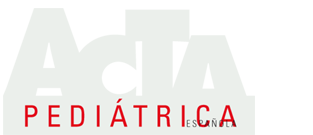Resumen
Introducción: En muchas plantas de hospitalización pediátrica se atienden pacientes que requieren más cuidados que los que se suponen para estas unidades. El objetivo de este trabajo es tratar de documentar esta situación y proponer mejoras asistenciales.
Material y métodos: Se han revisado los ingresos de 2012, 2014 y 2016 de un hospital secundario sin Cuidados Intensivos, buscando criterios de ingreso en Cuidados Intermedios que define la literatura. Se ha realizado una encuesta de opinión en la Sociedad Española de Pediatría Hospitalaria.
Resultados: Los pacientes que se adecúan a los criterios de Cuidados Intermedios suponen un 18,2% (2012), 20,8% (2014) y 19,8% (2016) del total de los ingresos pediátricos (médicos) del hospital secundario analizado.
Han participado 15 hospitales. La mayoría, el 80% (12), donde se incluyen todos los terciarios con UCIP, contestan que se atienden en planta pacientes con estas características.
Los hospitales con UCIP han trasladado desde su planta a intensivos el 1,22% de los ingresos; los hospitales sin UCIP, el 1,23% (p= 0,98); los hospitales secundarios sin UCIP, el 1,01%, y los hospitales comarcales, el 3% (p<0,001). Los hospitales en los que este problema no se percibe trasladan el 2,41%, frente a los que sí, el 1,12% (p<0,001).
Conclusiones: Existe conciencia de que se atienden pacientes con mayores requerimientos que los que se suponen en este nivel asistencial. Esto se hace con seguridad, pero convierte parte de nuestra asistencia en un nivel no bien definido entre la hospitalización habitual y los cuidados intensivos. Se deben establecer vías de colaboración para definir, regular y abordar esta situación.














